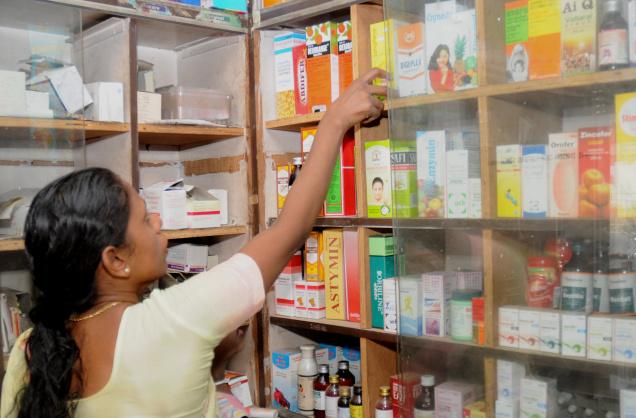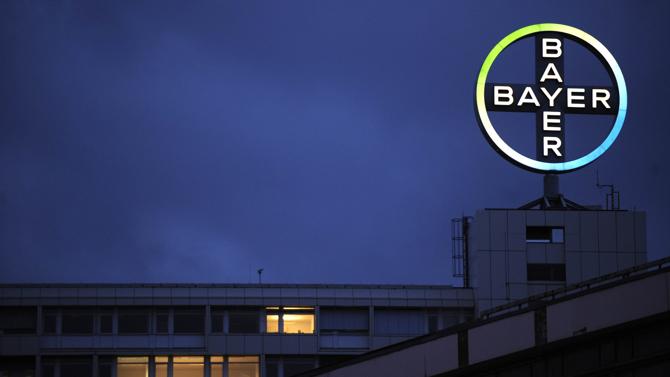
India’s ongoing efforts at safeguarding its intellectual property rights (IPRs) have been facing challenges from different directions.
In the heavily contested area of pharmaceutical patents, the Supreme Court, in an important ruling, stalled a last-ditch effort by German drugmaker Bayer to block the sale of a cheaper generic version of cancer drug Nexavar.
Upholding earlier rulings, the apex court stymied global drugmakers’ efforts to hold on to exclusivity on high priced drugs.
Domestic generic drug maker Natco was granted a patent in 2012 to sell a generic version of Nexavar at Rs.8,800 for a month’s dose, a fraction of Bayer’s price of Rs.2.80 lakh.
Read more – The Hindu
December 21, 2014 | Greg
According to McKinsey report of India Pharma 2015 – Unlocking the Potential of the Indian Pharmaceutical Market, the Pharma industry has immense opportunities and has a projected market growth of USD 24 billion by 2015 and USD 55 billion by 2020. Through discussions by the Pharma Industry experts it was evolved that Metro and Tier-I markets will make significant contributions to growth, driven by rapid urbanization and greater economic development. Rural markets will grow the fastest driven by step-up from current poor levels of penetration. The hospital segment will increase its share and influence, growing to 25 per cent of the market in 2020.
Read more – EquityBulls.com
December 20, 2014 | Greg

The Government is examining if it can move on Indian drug-maker Cipla’s demand for revocation of Swiss company Novartis’ patents on respiratory drug Onbrez.
Both the companies are now fighting a case over the drug in court.
“We are keenly watching the case launched by Novartis this week against Cipla for copying its patented medicine. It will give us leads on how to deal with Cipla’s demand that Novartis’ patent be revoked.
“But more importantly, our team is working on whether we could indeed move on revocation, with the case going on in court,” a Department of Industrial Policy and Promotion (DIPP) official told Business Line.
Read more – Hindu Business Line
December 18, 2014 | Greg
Depreciation of the Russian currency poses a risk to the profitability of Indian pharma companies such as Dr Reddy’s, Glenmark and Ranbaxy. Russia, a key market for these companies, contributes 5% of overall Indian pharma exports.
Read more – The Times of India
December 18, 2014 | Greg

We have bad news and good news about patent expirations next year. The bad? When you tot up the billions of sales at risk of patent expiration in 2015, the result is $44 billion, the biggest number since the debacle of 2012. That year, $53 billion worth of drugs fell off patent–and many drugmakers are still reeling.
Read more – FiercePharma
December 18, 2014 | Greg

Telangana and Andhra Pradesh, which together produce a third of India’s bulk drugs, are set to bag mega chemical manufacturing clusters under the central government’s proposed bulkdrugs policy. Maharashtra, Tamil Nadu and Odisha are the other states shortlisted to set up similar facilities as part of a strategy to reduce heavy dependence on China for bulk drugs -the molecules used in the manufacture of medicines -and also attract investment in the pharmaceutical sector.
Read more – The Economic Times
December 17, 2014 | Greg
A major Indian biotechnology company just announced it is breaking into the exciting field of biologic medicines. Zydus-Cadila has successfully manufactured a rough copy of a popular autoimmune disease biologic called Humira. The firm has about two dozen other biologic products under development.
Read more – The Daily Caller
December 17, 2014 | Greg
Indian drug makers see a significant business opportunity in the American regulator’s decision to step up vigilance on Chinese companies that could lead to a dip in China’s exports.
US Food and Drug Administration has decided to increase its inspection staff more than threefold in China to 26 from eight and the number of drug inspectors to 11 from just one at present.
Read more – The Economic Times
December 16, 2014 | Greg
“WHAT has long been predicted has now become a reality: China is leading the world in innovation.” So declares a press release promoting a new report by Thomson Reuters, a research firm, called “China’s IQ (Innovation Quotient)”…
Read more – The Economist
December 15, 2014 | Greg
WuXi PharmaTech is increasing its presence in the US announcing the opening of offices on the East and West coast.
Read more – Outsourcing-Pharma.com
December 15, 2014 | Greg

India, a country with consistent growth, an educated workforce, and established science-based research institutions, already has many elements required to realise the ‘Make in India’ vision.
In order to extend ‘Make in India’ to ‘Develop in India’ and finally to ‘Innovate in India’, we must build the country’s capability for innovation through Intellectual Property creation, protection, and commercialisation. Patents are developed to protect the research cycle and keep it moving. Without patent protection, research would come to a halt.
Read more – Hindu Business Line
December 13, 2014 | Greg

The move by National Pharmaceutical Pricing Authority (NPPA) to cap prices of 52 formulations may not hit drug makers much as the total market size of these drugs is Rs 123 crore.
Of this the value loss due to lowering MRP to ceiling prices set by the regulator would be 14% of the total Rs 123 crore.
Read more – dnaindia.com
December 13, 2014 | Greg

An Indian court has rejected German drug giant Bayer’s bid to block a generic version of its blockbuster cancer treatment Nexavar by a local drugmaker, a move hailed by activists on Saturday.
The judges rejected an appeal by Bayer on Friday that contested a March 2012 decision by India’s patent controller, who had argued the price charged by Bayer for the liver and kidney drug — $5,500-per-person, per month in India — was far too costly for most Indians.
Read more – Yahoo News
December 13, 2014 | Greg
To keep a check on prices of essential medicines, the government has brought 52 new drugs under its price control mechanism including some commonly used painkillers and antibiotics, as also those useful in treatment of cancer and skin diseases.
Following the latest move, more than 450 drug formulation packs are now under the price control mechanism of the National Pharmaceutical Pricing Authority (NPPA), which entails the regulator fixing ceiling and retail prices for such medicines.
Read more – Hindustan Times
December 13, 2014 | Greg

Develop 100 drugs in 10 years. That’s the ambitious goal set by a group of scientists and engineers at the University of Utah, founders of Recursion Pharmaceuticals, a start-up company that is able to quickly and affordably identify unexpected ways a drug could be used by testing it on diseased cells.
The disruptive approach to drug development, aided by custom-designed software capable of tracking changes, or signs of healing, in cells, could speed discovery of therapies for so-called “orphan” diseases.
Read more – World Pharma News
December 12, 2014 | Greg







